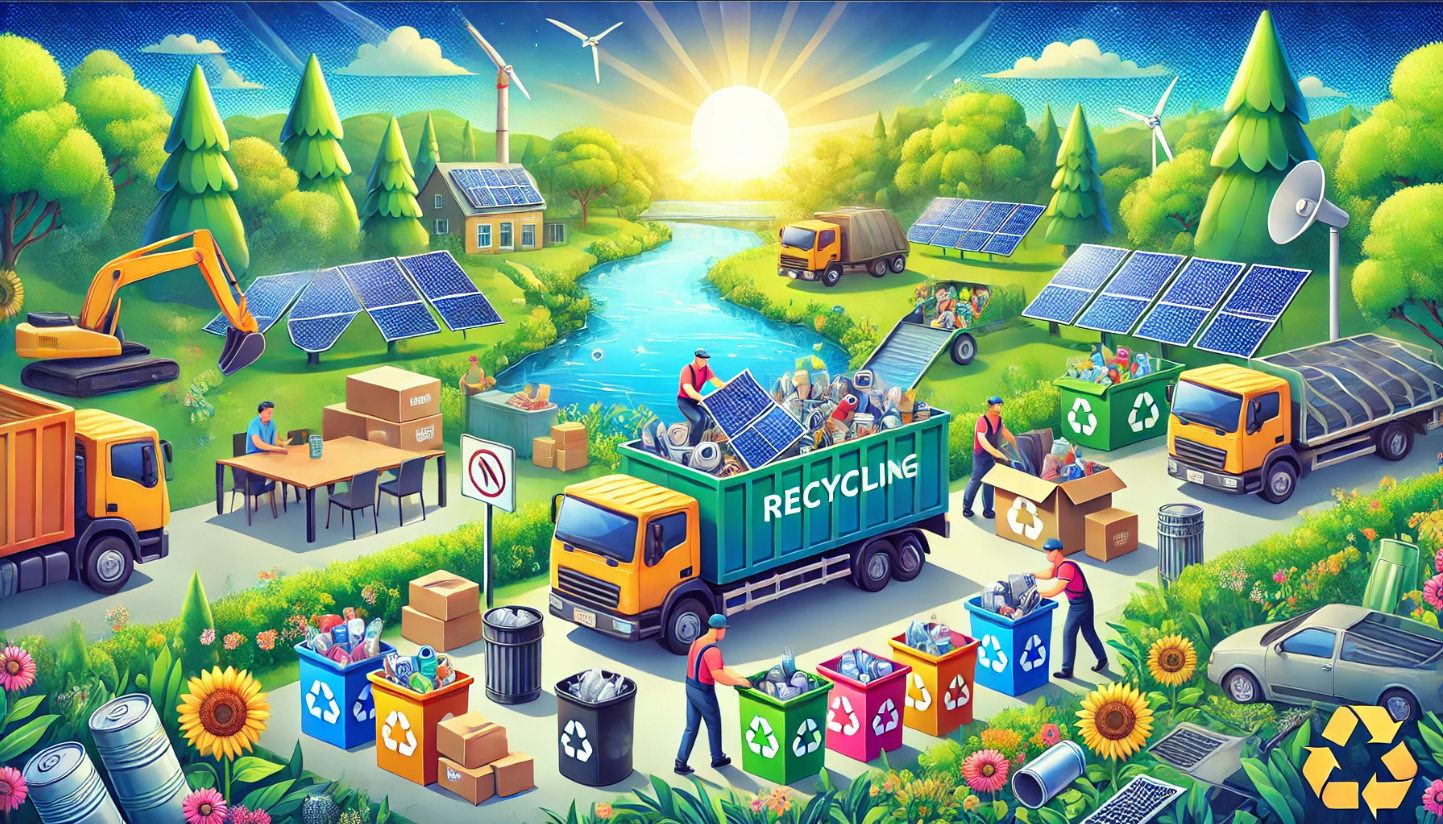
Recycling Unwanted Items – A Sustainable Guide to Decluttering
We all have
unwanted items taking up space in our homes. From outdated electronics to worn-out
furniture, deciding what to do with these items can feel overwhelming. Throwing everything in the trash might seem like an easy solution, but it’s not the most sustainable.
Recycling unwanted items helps reduce landfill waste, conserves resources, and gives materials a new life. This guide will show you how to recycle responsibly, where to take your items, and how to make sustainable choices part of your routine.
Why Recycling Unwanted Items is Important
Recycling isn’t just about getting rid of clutter; it’s a way to contribute to a cleaner, greener planet.
- Reduces Landfill Waste: Keeps recyclable materials out of overcrowded landfills.
- Conserves Resources: Recycling materials reduces the need for raw material extraction.
- Minimizes Pollution: Proper disposal prevents harmful chemicals from contaminating the environment.
- Supports the Community: Donated items can help families in need or fund local charities.
Common Household Items You Can Recycle
| Category | Examples | Recycling Method |
|---|---|---|
| Electronics (E-Waste) | TVs, laptops, mobile phones | E-waste recycling centers |
| Furniture | Chairs, tables, sofas | Donation, upcycling, recycling |
| Appliances | Refrigerators, stoves, microwaves | Scrap metal recyclers, junk removal |
| Clothing | Old clothes, shoes, linens | Textile recycling programs, donation |
| Plastics | Bottles, containers, packaging materials | Curbside recycling, specialized facilities |
| Yard Waste | Leaves, branches, grass clippings | Composting, green waste facilities |
Steps for Recycling Unwanted Items
1. Take Inventory of Your Junk
- Go room by room to identify unwanted items.
- Sort them into categories: recyclable, donatable, or trash.
2. Research Local Recycling Programs
- Check with your municipality about curbside recycling rules.
- Find local drop-off centers for electronics, plastics, and hazardous waste.
3. Donate Usable Items
- Gently used furniture, appliances, and clothes can be donated to charities or thrift stores.
- Use platforms like Freecycle or Facebook Marketplace to give items away.
4. Separate Hazardous Materials
- Items like paint, batteries, and electronics require special handling.
- Locate hazardous waste collection sites in your area.
5. Hire Professional Services
- For large amounts of junk, consider hiring eco-conscious junk removal companies.
Eco-Friendly Disposal Tips
1. Recycle Electronics Properly
- Old electronics, known as e-waste, contain valuable materials that can be reused.
- Remove personal data before recycling your devices.
2. Compost Organic Waste
- Kitchen scraps and yard waste can be composted to create nutrient-rich soil for gardening.
3. Repurpose or Upcycle
- Transform old furniture into new pieces, or use jars and containers for storage.
4. Partner with Green Junk Removal Services
- Many junk removal companies focus on recycling and sustainable disposal.
FAQs About Recycling Unwanted Items
1. How do I recycle electronics?
Take electronics to certified e-waste recycling centers or use trade-in programs offered by retailers.
2. Can I donate broken furniture?
Most charities won’t accept broken items, but some recycling centers can process wood and metal.
3. Is recycling always free?
Not always—some centers charge fees for processing certain items, like large appliances or hazardous waste.
4. What should I do with old clothes?
Donate wearable clothes, and recycle damaged textiles through textile recycling programs.
5. Can junk removal companies handle recycling?
Yes, many junk removal services specialize in sorting and recycling materials responsibly.
